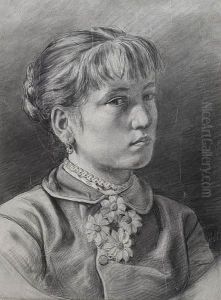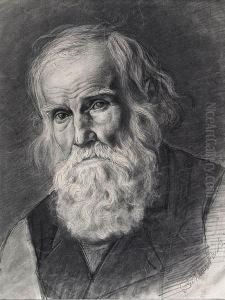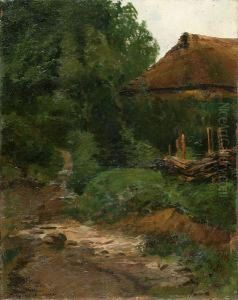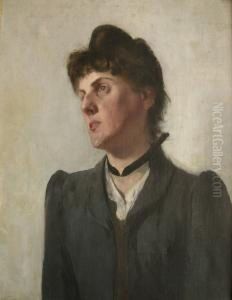Wladislaw Pochwalski Paintings
Władysław Pochwalski, born in 1855 in Kraków, which at the time was under the Austrian partition, was a Polish painter renowned for his portraits, capturing the essence of Polish intelligentsia, aristocracy, and the bourgeoisie of his era. His artworks are a vivid chronicle of the social and cultural life of Poland in the late 19th and early 20th centuries, reflecting the nuances of his subjects with remarkable sensitivity and skill. Educated at the Kraków Academy of Fine Arts and further honing his craft in Munich and Paris, Pochwalski was deeply influenced by the academic tradition, yet his work also displayed a unique blend of realism and impressionism, marking him as a distinctive figure in Polish art history.
Pochwalski's journey as an artist took him across Europe, allowing him to absorb various artistic influences, which he then melded into his own style. His portraits were not just mere representations; they were imbued with the personality and spirit of the sitters, often set against rich, detailed backgrounds that added depth and context to the portraits. Besides portraits, his oeuvre includes landscapes and religious subjects, though these are less known compared to his portraiture. His work was widely recognized and celebrated in his lifetime, earning him numerous awards and honors, and he was commissioned to paint portraits of many notable figures of his time, including members of the imperial families and high society across Europe.
Despite his success and the high esteem in which he was held, Pochwalski's work has not received the same level of international recognition as some of his contemporaries. In Poland, however, he is celebrated as one of the finest portraitists of his generation, and his paintings are held in high regard, featured in museum collections and exhibitions that highlight the richness of Polish art history. Pochwalski's legacy is that of a master portraitist who captured the soul of the Polish nation during a pivotal time in its history. He died in 1915, leaving behind a body of work that continues to be admired for its technical mastery and emotional depth.



